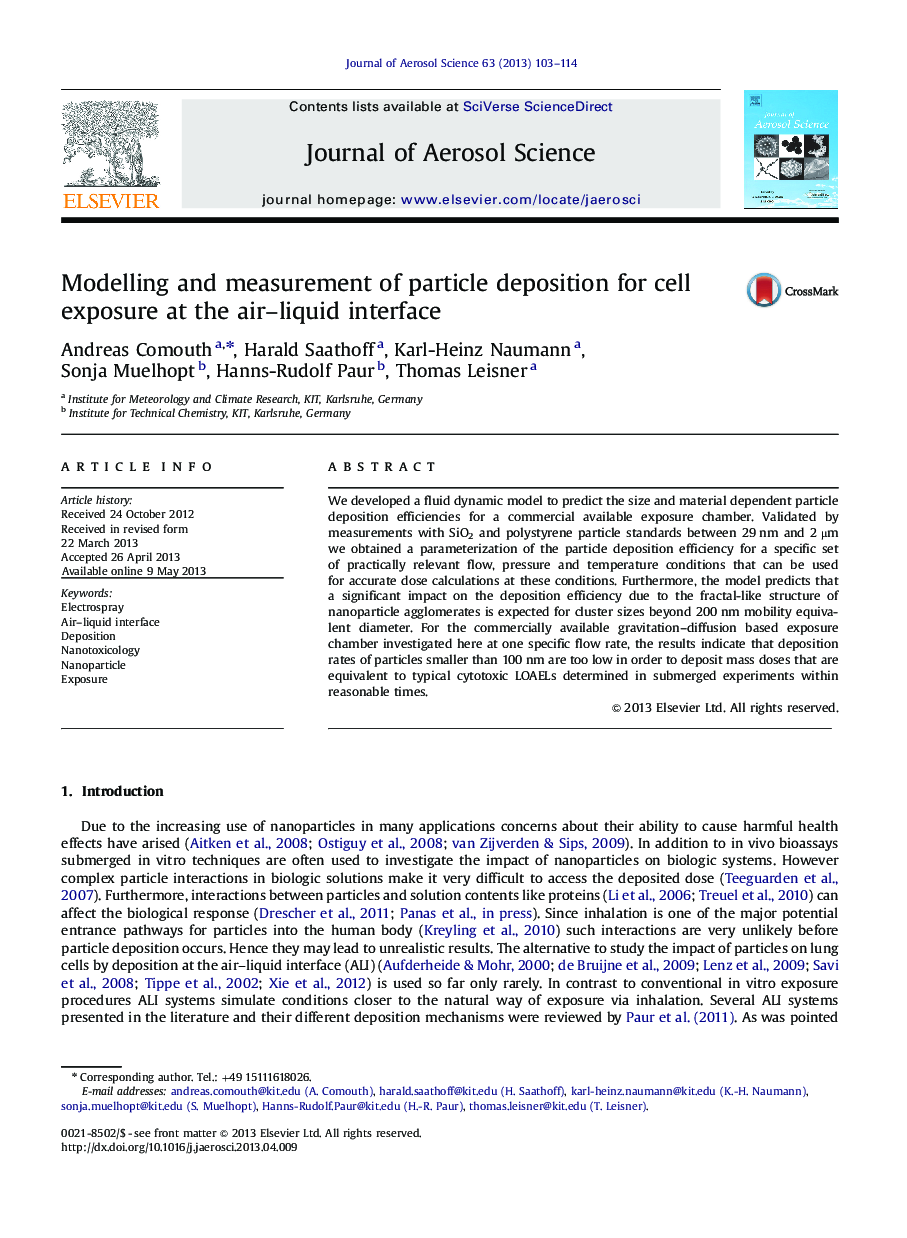| Article ID | Journal | Published Year | Pages | File Type |
|---|---|---|---|---|
| 4452435 | Journal of Aerosol Science | 2013 | 12 Pages |
We developed a fluid dynamic model to predict the size and material dependent particle deposition efficiencies for a commercial available exposure chamber. Validated by measurements with SiO2 and polystyrene particle standards between 29 nm and 2μm we obtained a parameterization of the particle deposition efficiency for a specific set of practically relevant flow, pressure and temperature conditions that can be used for accurate dose calculations at these conditions. Furthermore, the model predicts that a significant impact on the deposition efficiency due to the fractal-like structure of nanoparticle agglomerates is expected for cluster sizes beyond 200 nm mobility equivalent diameter. For the commercially available gravitation–diffusion based exposure chamber investigated here at one specific flow rate, the results indicate that deposition rates of particles smaller than 100 nm are too low in order to deposit mass doses that are equivalent to typical cytotoxic LOAELs determined in submerged experiments within reasonable times.
•We model and measure deposition efficiencies in a commercial exposure chamber.•We estimate the difference between spherical and fractal-like structured particles.•The deposition efficiency is given as a function of size and density.•Above 200 nm the deposition efficiency decreases compared to spheres•The presented model allows easy and accurate dose estimations.
